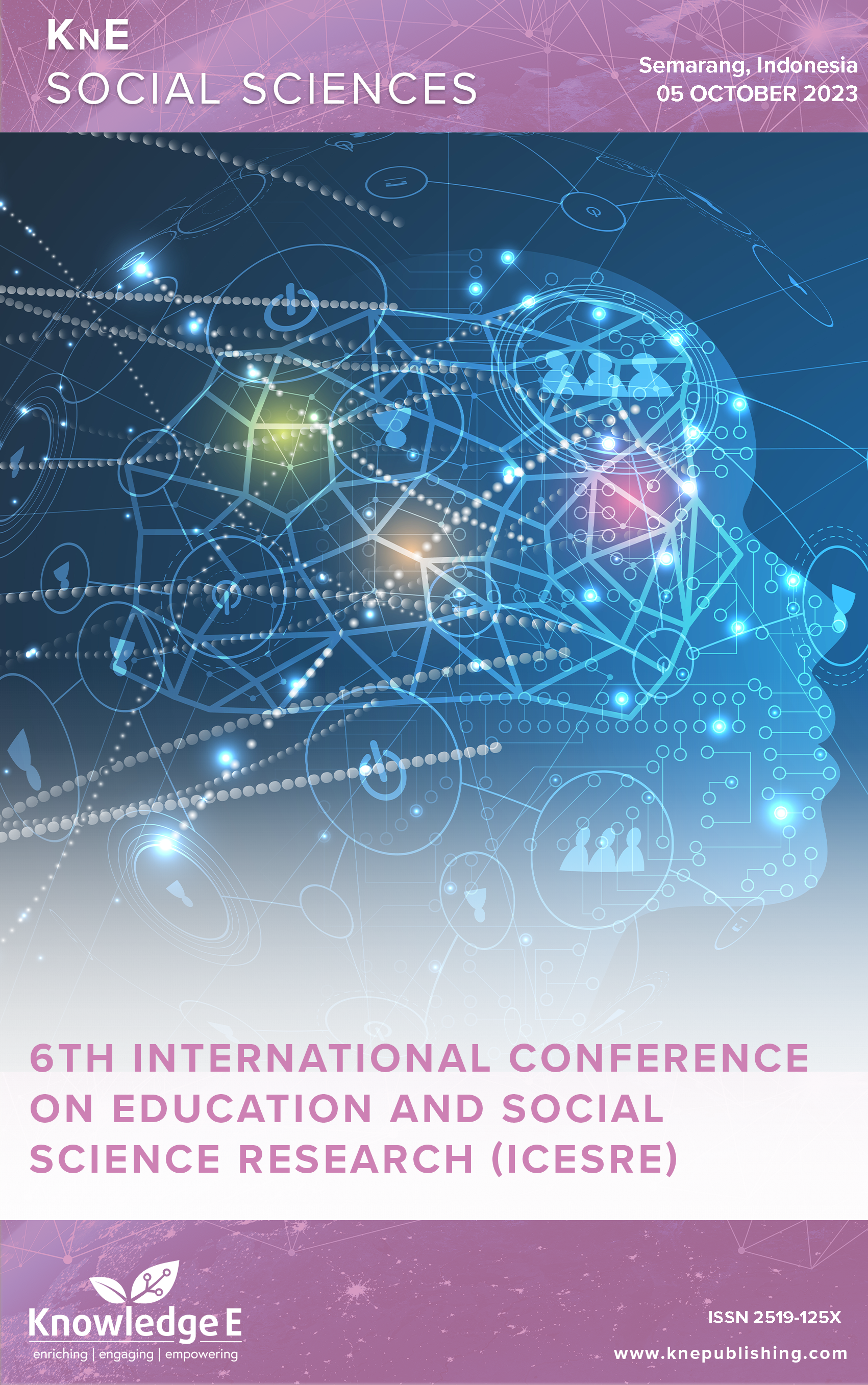``Pak SUSNO cerdas banget'' Compliment as a Realization of Brown and Levinson's Politeness Strategy in Netizen Responses on YouTube
DOI:
https://doi.org/10.18502/kss.v9i6.15275Abstract
In interacting, speakers will try to build harmony with their speech partners so that their speech is polite and not face threatening. Likewise with netizens when responding to uploads on YouTube. Even though based on surveys by Microsoft, Indonesian netizens are said to be uncivilized, but there are many netizens who maintain politeness in interacting. One strategy used is to compliment. This phenomenon is interesting to describe through research. The research aimed to describe and explain the use of compliments as a realization of the Brown and Levinson netizen’s politeness strategy in responding to uploads on YouTube. This research was a descriptive qualitative research using a cyberpragmatic perspective. The research data were utterances that realized Brown and Levinson’s compliment strategy. Research data sources: (1) Pidato pertama Moeldoko usai terpilih sebagai ketum Demokrasi versi KLB Deli Serdang (https://www.youtube.com/watch?v=sH_LeUYEktk), (2) SBY soal KLB Moeldoko (https://www.youtube.com/watch?v=zAtIiAnUxEU), (3) ILC-Suhu politik semakin memanas (https://www.youtube.com/watch?v=kDUwkJJSCA4), dan (4) ILC-Di balik polisi tembak polisi (https://www.youtube.com/watch?v=_4bjW51ef3Y). The data were taken by the documentation method using the technique of “simak bebas libat cakap (SBLC)”. Furthermore, the data were analyzed using descriptive techniques following the stages of the interactive model. Based on the results of data analysis, it can be found that the realization of compliments as a politeness strategy includes (1) compliment for attitude, (2) compliment for character, (3) compliment for behavior, (4) compliment for speech, (5) compliment for intelligence, (6) compliment for academic achievement, and (7) compliment for work performance. The results of this research strengthens the politeness theory of Brown and Levinson, enriches the study of cyber pragmatics, and can also be implemented in learning, especially in building the character of students.
Keywords: compliment, netizen response, politeness strategies, youtube
References
Brown P, Levinson SC. Politeness: Some universals in language usage. vol. 4. Cambridge university press; 1987. DOI: https://doi.org/10.1017/CBO9780511813085
Pramujiono A. Representasi Kesantunan Positif-Negatif Brown dan Levinson dalam Wacana Dialog di Televisi. Artikel Ini Telah Dipresentasikan Dalam Kongres Internasional Masyarakat Linguistik Indonesia (KIMLI) 2011;2.
Kompas K. Tingkat Kesopanan Orang Indonesia di Internet Paling Buruk Se-Asia Tenggara 2021.
Voa Indonesia. Indeks Keberadaban Digital: Indonesia Terburuk se-Asia Tenggara n.d.
Brocca N, Nuzzo E, Velásquez DC, Rudigier M. Linguistic politeness across Austria and Italy: Backing out of an invitation with an instant message. Journal of Pragmatics 2023;209:56–70. DOI: https://doi.org/10.1016/j.pragma.2023.02.018
Holmes J, Stubbe M. Power and politeness in the workplace: A sociolinguistic analysis of talk at work. Routledge; 2015. DOI: https://doi.org/10.4324/9781315750231
Jamal J. Tindak Pengancaman dan Penyelamatan Muka dalam Komunikasi Virtual di Grup Whatsapp “WI Teknis BDK Surabaya.” Jurnal Widyaiswara Indonesia 2021;2:31– 4. DOI: https://doi.org/10.56259/jwi.v2i1.76
Peng L, Xie F, Cai L. A case study of college teacher’s politeness strategy in EFL classroom. Theory and Practice in Language Studies 2014;4:110. DOI: https://doi.org/10.4304/tpls.4.1.110-115
Pramujiono A, Nurjati N. Guru sebagai Model Kesantunan Berbahasa dalam Interaksi Instruksional di Sekolah Dasar. Mimbar Pendidikan 2017;2. DOI: https://doi.org/10.17509/mimbardik.v2i2.8624
Scollon R, Scollon SW, Jones RH. Intercultural communication: A discourse approach. John Wiley & Sons; 2012. DOI: https://doi.org/10.1002/9781405198431.wbeal0555
Pramujiono A. Kesantunan Berbahasa dalam Wacana Dialog di Televisi. Disertasi Doktor Tidak Diterbitkan Surabaya: PPs UNESA [Program Pascasarjana Universitas Negeri Surabaya] 2012.
Yus F. Alterations of relevance in cyber-media. Universitas Psychologica 2008;7:629–42.
Yus F. Cyberpragmatics: Internet-mediated communication in context. John Benjamins Publishing Company; 2011. DOI: https://doi.org/10.1075/pbns.213
Creswel JW. Research design: pendekatan metode kualitatif, kuantitatif, dan campuran. Yogyakarta: Pustaka Pelajar 2017.
Harrison RL, Reilly TM, Creswell JW. Methodological Rigor in Mixed Methods: An Application in Management Studies. Journal of Mixed Methods Research 2020;14:473–95. https://doi.org/10.1177/1558689819900585. DOI: https://doi.org/10.1177/1558689819900585
Rahardi RK. EMOTIKON SEBAGAI KONTEKS MAKSUD DALAM CYBERPRAGMATICS (Emoticons as an Intended Context in Cyberpragmatics). SAWERIGADING 2021;27:277–89.
Mahsun M. Metode Penelitian Bahasa. Tahapan, Strategi, Metode, dan Tekniknya. Rajawali Press; 2017.
Sari EDG, Sudaryanto A, Faizah Betty R. Hubungan Antara Tingkat Spiritualitas Dengan Kesiapan Lanjut Usia Dalam Menghadapi Kematian Di Desa Pucangan Kecamatan Kartasura 2015.
Andayani A, Saputra AH, Irianto E, Setiawan B. GESAMSU (Gedrik Saruk Memang Seru) Based Environmental: Effectiveness Of Games On Mathematics Communication Ability Of Elementary School Students. AL-ISHLAH: Jurnal Pendidikan; Vol 14, No 2 (2022): AL-ISHLAH: Jurnal PendidikanDO - 1035445/AlishlahV14i21745 2022. DOI: https://doi.org/10.35445/alishlah.v14i2.1745
Yoga WIGNB, Ketut S, Hery SM. The implications of politeness strategies among teachers and students in the classroom. vol. 42, EDP Sciences; 2018, p. 00067. DOI: https://doi.org/10.1051/shsconf/20184200067
Mahmud M. The use of politeness strategies in the classroom context by English university students. Indonesian Journal of Applied Linguistics 2019;8:597–606. DOI: https://doi.org/10.17509/ijal.v8i3.15258
Senowarsito S. Politeness strategies in teacher-student interaction in an EFL classroom context 2013.

